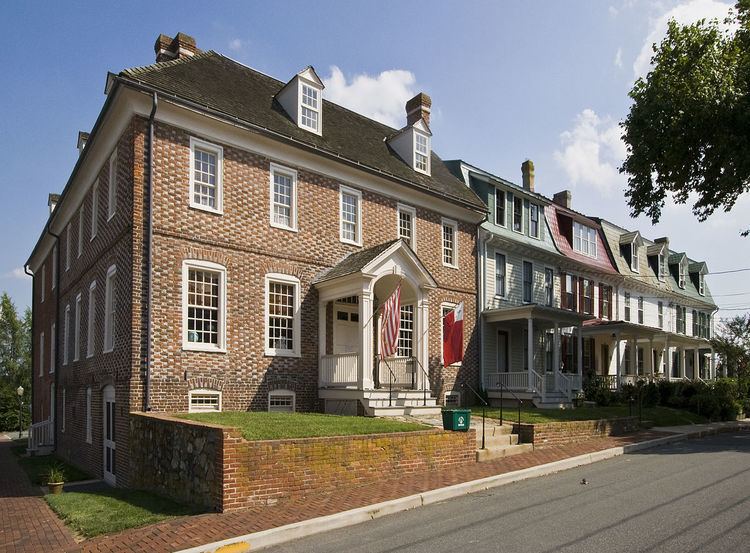Architect Multiple Area 58 ha | Designated NHLD April 15, 1970 Year built 1750 | |
 | ||
Location Roughly bounded by Maple Ave., Chester River, Cannon and Cross Sts., Chestertown, Maryland and increase roughly bounded by Chester River, Lynchberg, and Cannon Sts., College Ave., Philosophers and Riverside Terrs., Chestertown, Maryland Architectural style Georgian, Gothic Revival, Federal NRHP Reference # 70000263 (original)84001808 (increase) Added to NRHP April 15, 1970 (original)September 13, 1984 (increase) | ||
Chestertown Historic District is a historic district in Chestertown, Maryland. It was listed on the National Register of Historic Places and designated a National Historic Landmark in 1970, and its area was increased in 1984. The town on the Chester River, became the chief port for tobacco and wheat on the Eastern Shore of Maryland between 1750 and 1790. In consequence, Chestertown acquired a collection of more than fifty Georgian style town houses. The 18th-century residential area survived without harm a 1910 fire that destroyed the central business district of Chestertown.
The historic residential area is concentrated along Water Street between the business district and the Chester River. Highlights include:
A number of other structures on Water Street, High Street and Queen Street are included. Denton House and Widehall are also individually listed Registered Historic Places included in the district.
